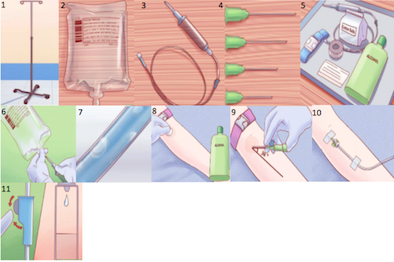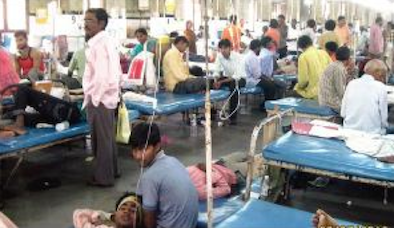Assignment 17
30.5.17Application and Implication
Get started
Understanding Application and implications
An application is any program designed to perform a specific function directly for the user or, in some cases, for another application. Examples of application include programs like paint, image editing programs, Web browsers, development tools and communication programs. They use the services of the computer's operating system and other supporting programs. The means of communicating with other programs is called the application program interface (API).
My project will involve a mobile application, which communicates with the bluetooth module installed on my circuit, which comprises of a controller and a sensor. When the bottle is empty my product will notify the nurse's mobile and the hospital desk. The mobile application will simply seek inputs from my product and create a buzz to alert the nurse and the Administration desk.
who's done what beforehand?
I have procured all the components and materials required to setup the IV stand and attach my kit to the IV stand. I did a thorough research about the existing products in the market and interacted with several nurses and patients from around 7 hospitals across Mumbai. Most of the patients from government hospitals complaint that the hospital staff were inadequate and when needed they had to request them to attend the patient. Also, the problem was worse during night. Since, there was no other solution available the family members had to stay awake and alert to notify the nurse about any emergency.
What materials, components and processes were used? & where did they come from?

1. Procure the IV Stand
2. Having the right IV bag(s) (Attach the sensor between the IV stand and the IV bag)
3. A Set: A set is the tube and connector that regulate how much fluid the patient will get. A macroset is used when you are supposed to give the patient 20 drops per minute, or about 100 mL per hour. Adults generally receive a macroset. A microset is used when you want to give the patient 60 drops of IV fluid per minute. Infants, toddlers, and younger children generally need a microset (This is manually done now. Future automation of drops from the bag will be done post fab academy program)
4. Get the right size of needle
5. Gathering supplies
6. Prepare the IV Bag: Pipe or insert the macroset or microset through the IV bag then hang it on the IV stand.
7. Get rid of the bubbles
8. Clean the spot where you will insert the cannula.
9. Inserting the Cannula (Dummy model)
10. Giving the patient (Dummy model) an IV
11. Regulate drops per minute ( A notification will be sent to the nurse and the Admin desk, if the IV Bag is empty.)
I procured the components from Lamington road and the IV kit from a Pharmacy shop near my house. The IV kits are generally available in local pharmacy stores in Mumbai.
Acrylic - available in lab
Electronic components used:
Header pins- Digikey
PCB - available in lab
Atmegs328 - Digikey
1 Capacitor 1uF, 2 Capacitor 10 pF
2 Resistor 100 ohm, 1 Resistor 499 ohm, 1 Resistor 1K ohm, 1 Resistor 10K ohm, 1 Resistor 0 ohm
1 "6 pin header", 1 USB connector, 2 0 ohm(Jumpers), 1 Crystal 20MHz and 2 Zener Diode 3.3 V.
6mm buttons - Digikey
Bluetooth module (HC-05) - Amazon
Pencil cell battery - Local Vendor
Wires and switches - Local Vendor
what did you design?
I designed the following:
- Electronic circuit board, USB programmer and coding the board using an Arduino IDE
- Casing for the board using a Laser cutting Machine
- Android interface to communicate with the kit
- LASER cutting files for the casing
Embedded Programming Electronics Design and Production Interface design Networking Vinyl Cutting files Project planning Project presentation slide and video presentation.png
What's the purpose of my project "PINK" ?
The IV kits currently present in the market are not smart. They have to be manually controlled and removed by the nurse. Specially at night the situation becomes intense. Saline bottles and other drugs which are usually given through these IV kits needs to be monitored. This is very cumbersome where the density of the patients is high or in case of a natural calamity / war, monitoring the IV kits can be time consuming. With reference to my conversations, with several doctors, this is common problem across India. The patients usually remain unattended unless the family member who sits besides the patient, calls the nurse.

Image of KEM Hospital, source: Mumbai Mirror
The major issue of these bottles are they are not monitored. Once, the fluid in these bottles are over, it tries to pull blood back from the body, which is dangerous. Excess quantity of fluids are dispensed sometimes,which again can be harmful.
Solution
I am trying to develop a sensor & notification device, which will notify the nurse and the hospital administration desk, whenever an IV bag at bed number “x” is empty.
Future development:
I would like to develop addon’s to this kit, where in we can control the micro droplets and stop the fluids whenever the fluid is empty or the necessary concentration of the fluid is dispensed